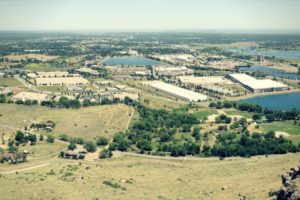As baby boomers hit retirement age, they are changing the landscape of the senior housing sector. Sometimes referred to as “the silver tsunami,” this demographic is poised to take over the senior housing industry. These seniors now have the full attention of the commercial real estate community.
By 2030, the number of people in America over 65 will be 106.8 million. Compare that to 33.5 million in 1995, and you can clearly see that baby boomers will completely change the retirement landscape.
Retirees have many different needs and desires. Therefore, there are a variety of options available in senior housing for commercial real estate developers:
- Independent living
- Assisted living
- Nursing care
- Active adult
- Memory care
- CCRC (Continuing Care Retirement Communities)
Of these, the “Active Adult” sector is gaining interest among senior housing investors as they recognize the fact that today’s seniors want to stay active and dynamic in their later years. Developers and investors are looking closely at this up-and-coming trend in senior housing complexes, as today’s retirees are looking for a lot more than just a roof over their heads.

What is “Active Adult” senior housing?
“Active Adult” refers to retirees who are interested in maintaining their well being and continuing to enjoy life into retirement. Active Adult senior communities feature a low-maintenance lifestyle and the opportunity to participate in a variety of health and wellness activities and programs. These developments have a country club feel, offering residents a variety of recreation and enrichment events.
Active adult housing design
For the most part, homes in these communities are single-family, townhouse, or condo style homes at around 1,500 square feet. They generally feature two- or three-bedroom, and single-level living. These homes are designed using the “aging in place” concept, to keep seniors in their homes as long as possible. The aging in place design concept has features such as wider doors, few or no stairs, curb-less walk-in showers, state-of-the-art creature comforts, and rocker light switches. They also boast open, flowing floor plans and lots of natural light.
The exteriors of the homes are designed for little to no maintenance. Active Adult 55+ communities are often run by a Homeowners Association (HOA) that takes care of landscaping and yard maintenance for a monthly fee. Being relieved of the burden of exterior home maintenance is one of the main reasons this demographic chooses this type of community.
Community amenities
Development in the Active Adult senior housing sector of commercial real estate is focused on community amenities. Instead of prioritizing extended and health-care related services, the main features are recreational facilities, open space, and resort-style amenities.
Many communities feature abundant open space that include scenic walking and fitness trails and park areas. Recreational activities take a front seat, and at least one swimming pool and spa are always part of the complex. These are usually accompanied by facilities that include steam rooms, sauna rooms, and state-of-the-art gym and fitness equipment.
There are also spaces for recreational classes such as aerobics, yoga, and tai chi. Of course, recreational courts for tennis and shuffleboard are included. Some communities even have their own golf courses, and, if you haven’t heard of pickleball yet, look out. It has taken over golf as the hottest sport in adult communities, and four- to eight-court pickleball facilities draw big crowds for tournaments. It’s all part of the changing tastes of the new senior demographic.
Other amenities that 55+ consumers are coming to expect from commercial real estate developments are more outside-the-box features, such as community gardens, farmers markets, and dog parks. Fishing lakes stocked with fish, ponds for model sailboat racing, and wildlife sanctuaries for bird watching are also gaining popularity. These fresh ideas all contribute to residents’ well-being and sense of belonging.
The clubhouse or main common area of these communities is the central hub of activity, with spaces for clubs and activities ranging from scrapbooking to karate. One of the main attractions of Active Adult communities are the peers who also live there, offering abundant opportunities to make friends with like-minded people. The clubhouse is a space for people to gather and socialize. A commercial kitchen with top-of-the line appliances is essential for community events and private functions.
Active Adult communities & commercial real estate investors
Active Adult is one of the fastest growing real estate products, largely because there is no health care component to this type of senior commercial real estate development. However, there are some challenges that developers and investors need to keep in mind. Since the cost of land is high in many areas, they have to be realistic about return on investment. They also need to know their customer and plan for the future.
Who is the Active Adult consumer?
According to a recent study by the TransAmerica Center For Retirement Studies, 46% of retirees want to move once they retire, and 71% would prefer to live in a single-family home when they do. They also name affordability and maintaining their ties with friends and family as top priorities. Developers and builders targeting the 55+ market will have to learn to build “well-being” into these developments and communities.
Baby boomers, or those born between 1946 and 1964, make up the majority of this population currently, with Generation X hot on their heels. In 2021, consumers 56 and older made up 32% of the homebuying market. Many of these consumers are looking for affordable retirement homes that offer the lifestyle and amenities they are looking for, without the element of extended healthcare or assisted living being a factor.
Today’s younger seniors aren’t ready to consider themselves “old.” In fact, they’re feeling younger and more vibrant than ever. Active Adult 55+ senior living communities are one of the fastest growing real estate products in the nation, and commercial investors are eager to tailor their offerings to the largest retirement demographic in the history of our country.



